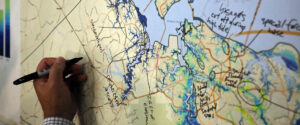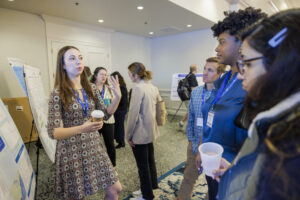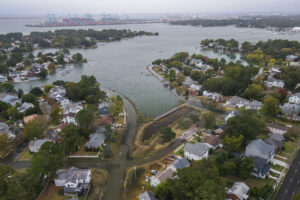NOAA Coastal Management Fellow's app connects New York hobbyists, tourists with nature
There’s no shortage of information about the state of New York’s natural resources, but sometimes, these reports are scattered in academic papers or complicated federal reports. Enter the New York Geographic Information Gateway.
Alex Kuttesch, a NOAA Coastal Management Fellow and graduate of Virginia Commonwealth University’s Master of Urban and Regional Planning program, spent the last two years expanding and improving the Gateway, a website that maps out New York resources. The website contains everything from updates on local water conditions and ecological information to economic and social data such as population density and employment rate. Through his fellowship, Kuttesch was able to make more datasets available through the Gateway and assist the State of New York in consolidating valuable information.
Collecting crowdsourcing data
Kuttesch also helped develop a crowdsourcing app called RecIT-NY, an extension of the gateway website that collects and organizes real-time recreational information.
“It’s pretty hard to get recreation data,” Kuttesch says. “Usually, it’s through a one-time survey, and getting a contractor to administer a survey can be expensive. A lot of times it’s obsolete after the survey because people’s recreation habits change weekly, really.”
With the app, users can snap a picture while they’re visiting a site, tag the location, and write a few sentences about their experience. Other users can scroll through the posts to learn about other peoples’ experiences and see actual photos of the site.
Kuttesch also developed a way to use the posts and check-ins associated with a park or monument’s Facebook page to assess the popularity of different state landmarks. This information helps tourists identify beaches, parks, and hiking trails while planning future trips, and it also helps state planners keep track of popular recreational areas.
The website contains everything from updates on local water conditions and ecological information to economic and social data such as population density and employment rate.
With the app, users can snap a picture while they’re visiting a site, tag the location, and write a few sentences about their experience. Other users can scroll through the posts to learn about other peoples’ experiences and see actual photos of the site.
Expanding the information in the Gateway
While RecIT-NY was a huge undertaking, a significant portion of Kuttesch’s fellowship was behind-the-scenes work on the Gateway website.
When Kuttesch started his fellowship, the website included about 300 datasets, primarily from state-funded research. Through Kuttesch’s efforts, that number has more than doubled to include nearly 800 datasets from government and academic research.
The website uses the Geographic Information System to make helpful, location-based displays of data that would be difficult to comprehend otherwise. In one example, he was able to map out a variety of whale sightings recorded by two whale-watching tour companies.
He said this work has inspired him to pursue a career in urban planning after his fellowship ends in the beginning of August.
“If I can incorporate my coastal experience into that, that would be great,” Kuttesch says. “If I could do resiliency planning or some sort of coastal planning, especially at a local level, I think that would be cool.”
Takeaways:
- The Geographic Information Gateway of New York contains hundreds of datasets spanning ecological and economic information used by state officials and the public.
- Kuttesch added additional information, developed a recreational app, and developed the gateway website as a part of his NOAA coastal management fellowship.
- His work makes the website more useful for tourists and recreational outdoorsmen, but also assists city planners who need real-time information about public use of state resources.
Video by Aileen Devlin | Virginia Sea Grant
Contributed photo from Alex Kuttesch and NOAA Photo Library
Story by Madeleine Jepsen | Virginia Sea Grant
Published Oct. 5, 2018.





